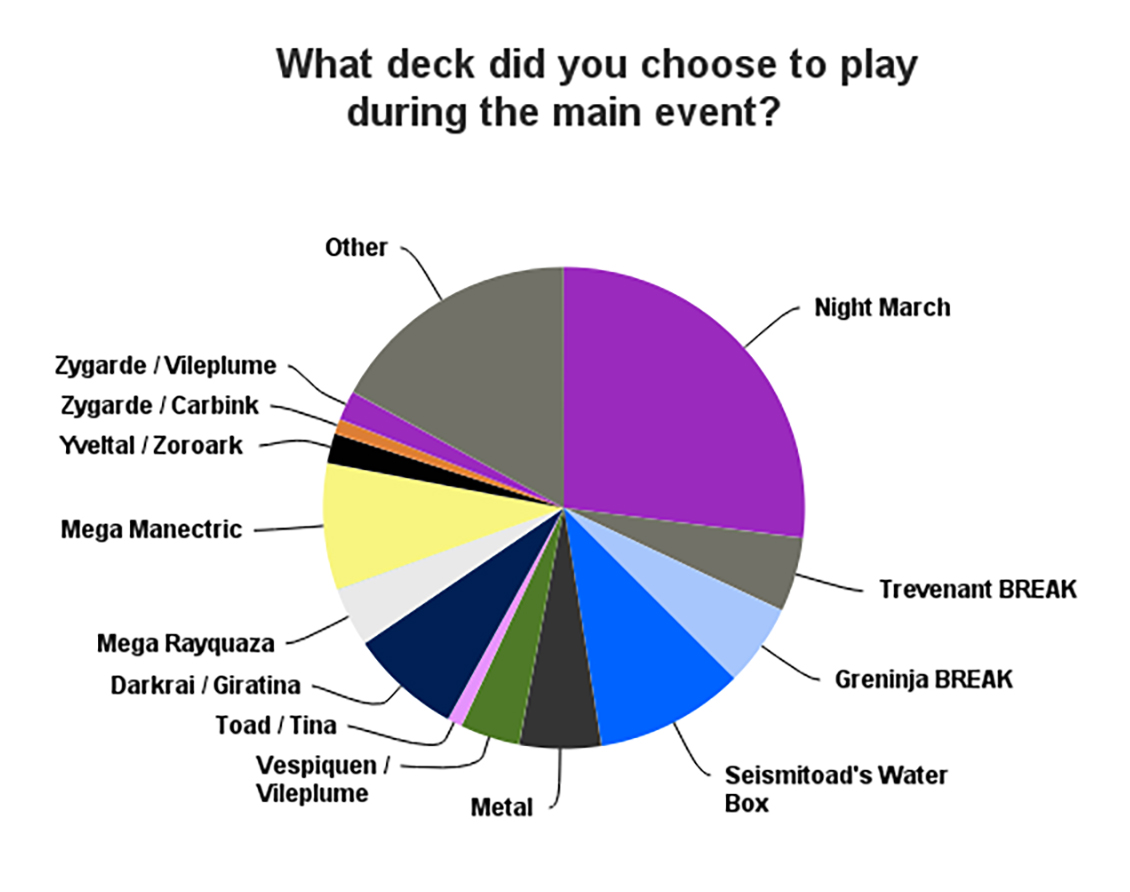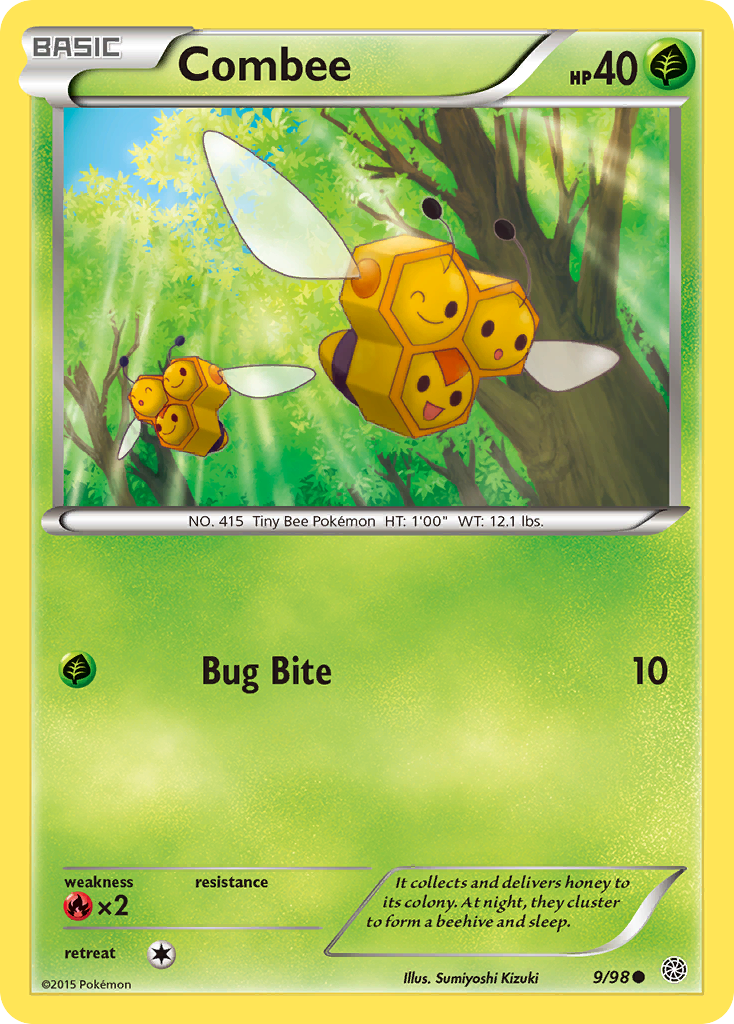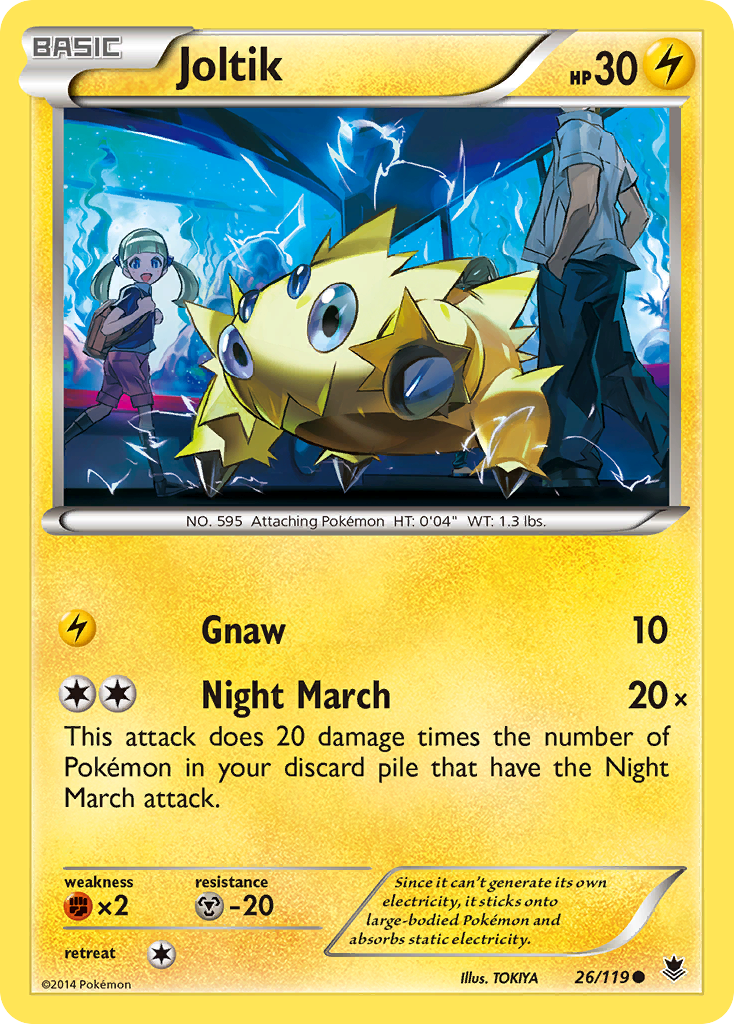National Championships Recap — Understanding the Hive Mind
Hola Beach goers! I have just returned from Columbus, Ohio where the U.S. National Championships were held. Unfortunately, things didn't quite pan out for me, but a couple of my friends were able to do very well. I also got to watch an iteration of the Vespiquen / Night March deck I have been working on since State Championships win the whole tournament! Congrats to Nick Robinson for his National title!
I'd also like to give quick shout outs to my friends Andrew Wamboldt and Jimmy Pendarvis for their strong finishes. I roomed with both of these guys at the tournament and it was exciting to watch their runs unfold even though I had dropped from the main event. Wamboldt was able to finish 36th with the Night March / Vespiquen list that we had been developing together since States. Wamboldt suffered a rough day two, but began the tournament with a stunning 7-0-2 record during day one Swiss. Fellow PokeBeach writer Jimmy Pendarvis finished 14th with his own Water Box list after a gut wrenching tie with Sorina Radu during his win-and-in to Top 8 match. Congrats to Wamboldt and Jimmy for their outstanding finishes!
Many consider U.S. Nationals to be the most challenging Pokemon TCG tournament of the year. Aside from Jason Klackzynski's 2015 win with Seismitoad-EX / Garbodor, the trend has been for relatively lesser known players to take the title, which continued this year with Nick Robinson's breakout success. In this article I will analyze data that I have collected from National Championships participants and discuss why I consider it to be the most challenging tournament of the year, even more challenging than Worlds! My hope is that this article will better prepare you for large-scale National Championships in the years to come. So put your phone down, take a break from Pokemon Go, and let's get to it!
Post Nationals Survey
The post Nationals survey that I conducted was simple, but the results from the survey will be valuable towards understanding what happened at this year's National Championships. I was fortunate to have 200 respondents to my survey, giving me a sizable pool to extract data from. Though I could have limited the survey to people that participated in U.S. Nationals only, I decided against it, opening the survey up to anyone that competed at a National Championship across the world. My survey was composed of six questions as follows:
- What deck did you choose to play during the main event?
- Why did you choose your deck?
- How was the meta compared to what you anticipated?
- How far in advance did you have your deck picked out?
- How did you finish?
- If you could go back and select a different deck for Nationals, what deck would you choose?
My goal in conducting the survey was to gather data on which decks players chose to play at Nationals, why they chose those decks and how they felt about their choice after the tournament was complete. U.S. Nationals is a hard tournament to read. With over a thousand attendants, predicting the direction of the hive mind can be quite a chore. Now I'm no statistician, so have mercy on me here. I took a class in stats over a decade ago. A decade ago! I'm old! So please forgive my lack of formal statistics education. I'm just a special education teacher trying to piece together some facts. First, we're going to take a look at what players played at Nationals compared to what succeeded at U.S. Nationals.
What Decks Did Players Bring To the National Championships?
Of the 200 players that responded to my survey, an overwhelming 27% played Night March at their National Championships, out representing the next most popular deck by double digits. The next most popular deck was Water Box, representing 10% of my respondent's choices. Beyond that, no deck made up more than one tenth of the meta according to my survey's results.
 27% played Night March
27% played Night March- 10% played Water Box
- 8.5% played M Manectric-EX
- 7.5% played Darkrai-EX / Giratina-EX
- 5.5% played Metal
- 5.5% played Greninja BREAK
- 5% played Trevenant BREAK
- 4% played M Rayquaza-EX
- 4% played Vespiquen / Vileplume
- 4% played Vespiquen / alternative attackers
- 2% played Wailord-EX
- 2% played Darkrai-EX / Garbodor
- 2% played Zygarde-EX / Vileplume
- 2% played Yveltal / Zoroark
- 2% played Tyrantrum-EX / Giratina-EX / Bronzong
- 1% played Carbink BREAK / Medicham
- 1% played M Mewtwo-EX
- 1% played Seismitoad-EX / Giratina-EX
- 1% played Carbink BREAK / Zygarde-EX
After reviewing my results, everything seems about right compared to what I saw at U.S. Nationals. The only stat that doesn't quite fit with my experience was the amount of Trevenant BREAK reported. I feel like Trevenant was very well represented at Nationals, contending with Water Box for the second most popular deck. Nonetheless, this info gives us a decent picture of our Nationals metagame.
Night March dominated the field, representing over a quarter of the player base while all other decks made up a tenth of the metagame or less. My greatest error heading into the National championships was underestimating how much Night March would see play. I assumed that the deck's popularity would have taken a hit with Giratina-EX and Water Box stepping into the picture, but players were largely unfazed when it came to piloting their favorite archetype.
How Does This Compare to How Decks Finished in the Top 64?
Thanks to the data collected by my friend and teammate Andrew Wamboldt we are able to compare the data of what decks showed up to Nationals listed above with the data of what decks finished in the Top 64. According to Wamboldt, 25 Night March decks finished in the Top 64 of U.S. Nationals, making up over a third of the day two meta share at 39%. This is over a 10% increase compared to the amount of players that reported bringing Night March to Nationals in my 200 player survey.
The next most popular deck in Top 64 was none other than Trevenant BREAK, with six placements in day two and a 9% meta share. This is a few points higher than the percentage of players that reported using Trevenant in my post Nationals survey, but more representative of the proportion of players that I saw using Trevenant at the tournament. The next most successful decks were Water Box and M Manectric-EX, with four Top 64 finishes a piece, each representing 6% of the day two field. The only other deck that was represented more than twice in day two of competition at U.S. Nationals was Carbink BREAK / Zygarde-EX, solidifying three placements in Top 64, representing 5% of the day two field.
Despite Night March's dominance, 19 different decks ended up in the Top 64 at U.S. Nationals. This blew my mind. I am realizing that I tried to read too far into what players would choose to pilot at the National Championships. I thought Dark decks would show up like Night March showed up, especially with their strong representation at the Origin's Win-a-Trip Tournament. I thought Metal would be huge, especially with its strong finish at Canadian Nationals. But I am coming to realize that with a meta as established as this one, going largely unchanged since State Championships, many players will show up to Nationals with the deck that they are most comfortable with.
In fact, looking back, the most successful year that I ever had at Nationals was my first Nationals in 2013. In 2013 I brought Blastoise / Keldeo-EX to Nationals, the same list that I had been working on all year. I played well, making my way to 6-2 before losing my win-and-in match to the mirror. I ended up bubbling out of cut at 6-3, and I haven't had a Nationals run that strong in the three years since then.
Oddly enough, I think it's easier to predict the decks that people will play at the World Championships than it is to predict a field of 1,000 players. Being a Worlds competitor myself, it's easier to tap into what 300 other Worlds competitors might be thinking than it is to predict what over 1,000 people across the country, across all different skill levels might be thinking on a given day. The difficulty of predicting a Nationals field got me wondering why players selected their decks for the biggest tournament of the year, which conveniently leads me to my next survey question!
This concludes the public portion of this article.
If you'd like to continue reading, consider purchasing a PokeBeach premium membership! If you're not completely satisfied with your membership, you can request a full refund within 30 days.
Each week we post high-quality content from some of the game's top players. Our article program isn't a corporate operation, advertising front, or for-profit business. We set our prices so that we can pay the game's top players to write the best content for our subscribers. Each article topic is carefully selected, goes through multiple drafts, and is touched up by our editors. We take great pride in our program!



